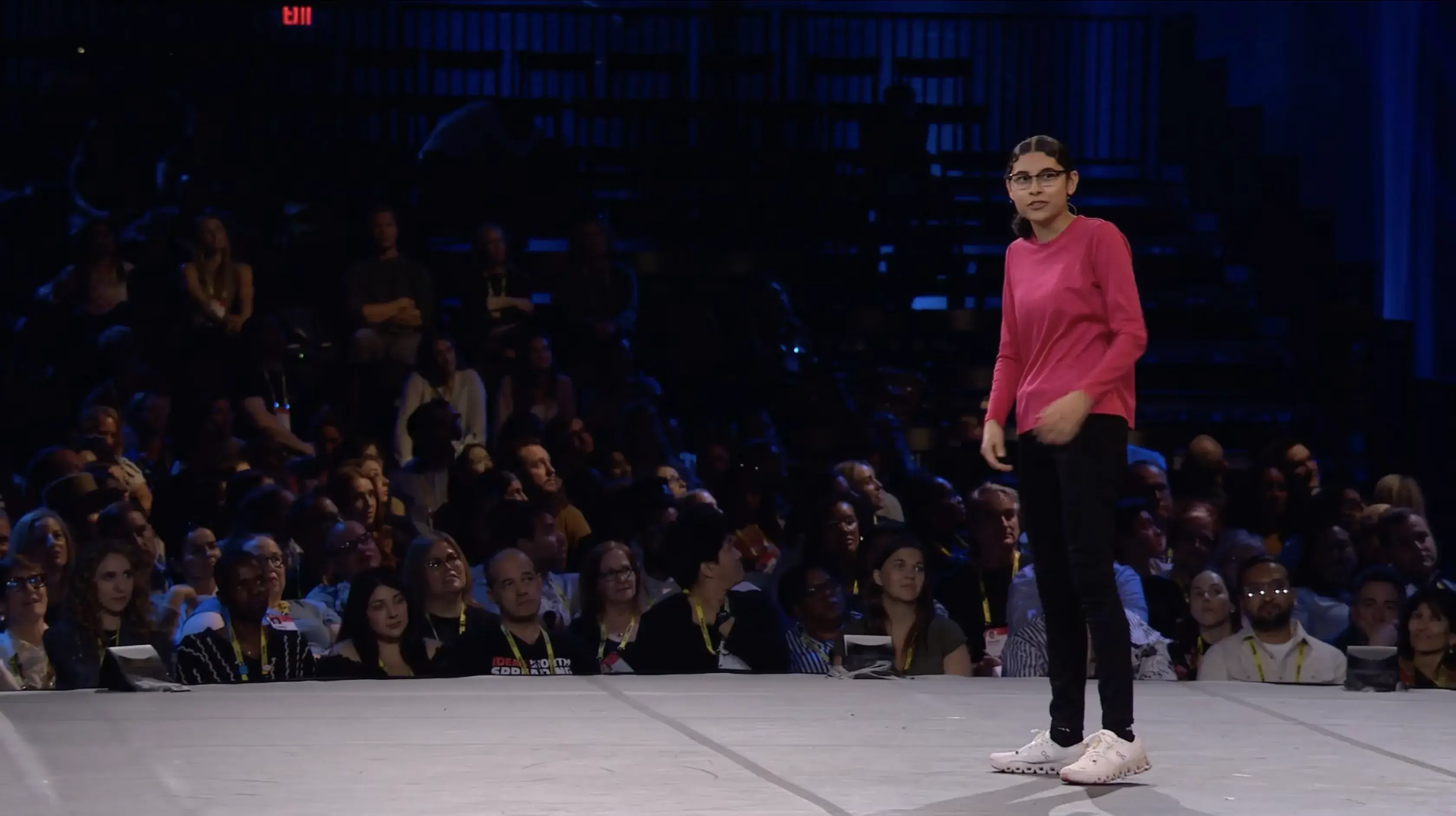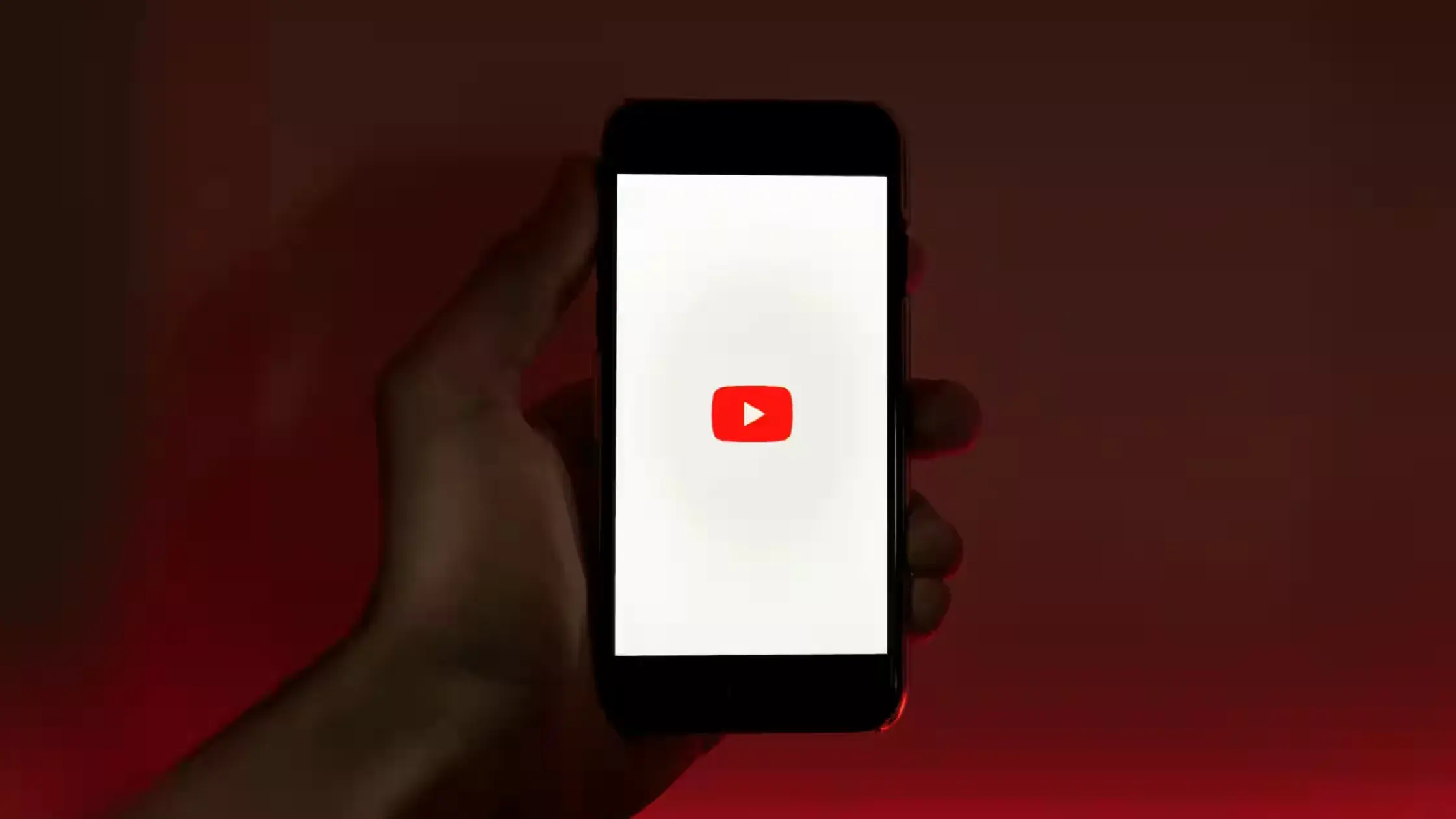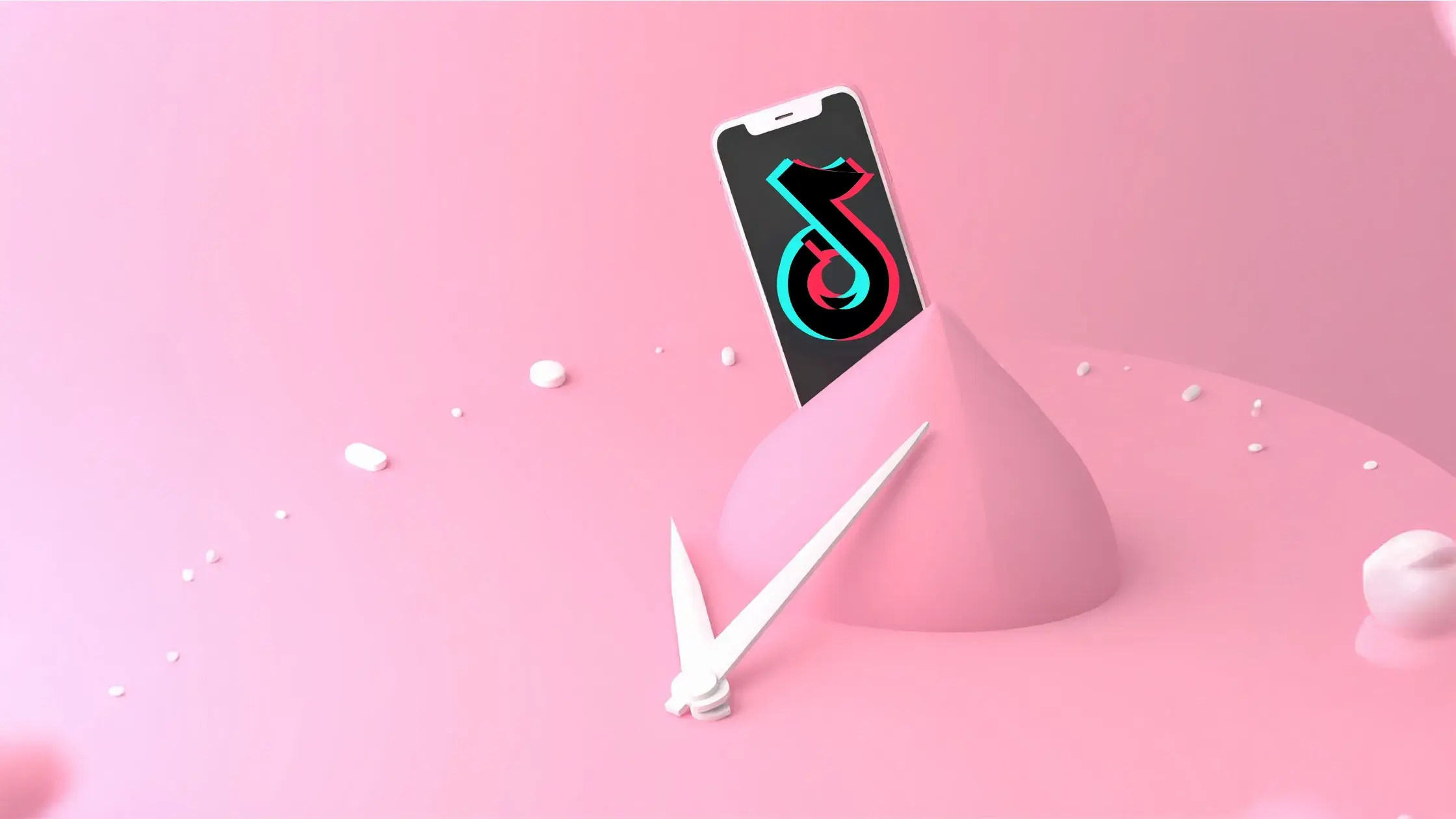When Jenny Hoyos says "I don't ask if it'll go viral - I can figure out how to make it viral," it might sound like teenage overconfidence. But with over 2.2 billion views in just 3 years and an average of 10 million views per video, she's earned the right to make such bold statements.
At just 19 years old, Jenny Hoyos has mastered the art of viral content creation, accumulating 6.2 million subscribers by treating YouTube like a science experiment rather than a game of chance.
What makes Jenny's approach unique isn't just her impressive metrics – it's her systematic, almost scientific approach to content creation. She's analyzed thousands of shorts, including content from giants like MrBeast and Ryan Trahan, developing a replicable framework that consistently delivers results.
"I have analyzed thousands of shorts," Jenny explains. "I've scraped you know, the scripts of a bunch of shorts and I've put it in this readability checker and I've noticed that the most popular shorts, especially Mr Beast... his is like in first grade level.”
That is the rigor that Jenny applies to come up with her winning strategy for consistently high views.
In this comprehensive guide, we'll break down Jenny's exact process for creating viral shorts, including:
- Her unique approach to hooks that stop the scroll
- The perfect video structure
- How she uses data to drive every decision
- Her monetization strategies that go beyond the Shorts Fund
- The common mistakes most creators make (and how to avoid them)
Whether you're just starting with YouTube Shorts or looking to improve your existing content, Jenny's framework offers a practical, data-driven approach to achieving viral success. Let's dive in.
The Business Mindset That Drives Success
While most 18-year-olds are figuring out their next TikTok dance, Jenny Hoyos approaches YouTube with the mindset of a seasoned CEO. "I think the biggest overarching thing is treating YouTube like a business," she explains, and her results prove this approach works.

Success on YouTube isn't about waiting for inspiration to strike – it's about building systems that guarantee consistent, high-quality output. Jenny's approach proves this with every 10-million-view video she produces.
The Power of Strict Scheduling
Every Saturday at 10:00 AM EST, without fail, Jenny's audience knows they'll see new content. This isn't by chance – it's the result of meticulous planning and unwavering dedication. She plans content weeks in advance, maintains a detailed calendar, and never makes exceptions. This consistency has become one of her strongest assets.
Quality Meets Quantity
Jenny balances the eternal creator struggle between quality and quantity through systematic preparation. "I want my videos to be quality, but I also want to make sure that I'm uploading consistently," she says. To achieve this balance, she maintains a list of over 1,000 content ideas and always has backup videos ready for emergencies. This preparation ensures she never has to choose between posting on schedule and maintaining her high standards.
[Insert image here: A screenshot of Jenny's analytics dashboard showing her impressive metrics]
The Systems Behind Success
"Making sure that I'm very on top of my schedule, like all my content is scheduled, all my content is on a calendar," Jenny emphasizes. Her organizational system includes detailed production timelines and quality control checkpoints at every stage. This structured approach ensures she never misses an upload while maintaining consistent quality.
Beyond Basic Metrics
Unlike creators who focus solely on views, Jenny tracks:
- Scroll-through rates (she maintains an impressive 85% average)
- Retention rates (targeting 95% or higher)
- Rewatch value
- Audience growth patterns
- Revenue per video
“When my kitchen broke down, I saw it as a content opportunity," Jenny reveals. "I created a series about cooking for strangers to raise repair money. That series averaged 15 million views per video, proving that even problems can become profitable content."
Pro Tip: Jenny suggests treating each video like a product launch rather than just another piece of content. This mindset shift helps maintain professional standards and ensures every video serves a strategic purpose.
The Professional Edge
Jenny treats each video like a product launch rather than just another piece of content. This mindset shift helps maintain professional standards and ensures every video serves a strategic purpose. The results speak for themselves: consistent 10M+ views per video, over 600M views in one year, and 3.5M+ subscribers.
Remember: This isn't about removing creativity from the process – it's about creating a framework that allows creativity to flourish consistently. As Jenny puts it, "You can make a video about anything... it's just adding story and a twist."
Finding Your Blue Ocean

When Jenny first started creating content, she did what many newcomers do – she copied her idol. "I was actually copying Graham Stephan, like one-for-one, I kid you not, the exact same style," she admits with a laugh. But this approach led her to an important realization about standing out on YouTube.
The secret to viral success isn't being better than everyone else in a crowded space – it's finding an entirely new space where you can be first and best.
The Journey to Originality
Jenny's path to finding her niche evolved through several key stages:
- Starting by copying Graham Stephan's style
- Realizing she was in a "red ocean" of finance creators
- Analyzing the entire finance content landscape
- Identifying a crucial gap: no one was making finance content for kids
- Leveraging her youth and family experience to fill this gap
Personal Experience as a Competitive Advantage
"I came from a family of extreme money savers," Jenny explains. This unique background became her secret weapon. Instead of trying to compete with established finance creators on traditional topics, she drew from her personal experiences. Her family's approach to saving money provided endless stories that resonated with younger viewers, creating content that felt both authentic and relatable.
Jenny approaches content creation by examining what makes her different. She encourages creators to ask themselves these essential questions:
- What's your unique advantage?
- What skills do you have that others don't?
- What situations in your life could benefit others?
- Who isn't being served by current content?
The Power of Authenticity
"When I think of blue ocean, I think of having your own unique twist," Jenny explains. For her, this meant breaking down complex financial concepts into simple, engaging content for younger viewers. She avoided financial jargon, created visually engaging money-saving challenges, and incorporated family dynamics into her content.
"I noticed everyone was doing extreme challenges with high budgets," Jenny shares. "So I created the opposite - my $1 fast food recreation series. It was relatable and accessible to everyone."
This series perfectly exemplified her blue ocean strategy, creating content that stood out by being intentionally different from trending formats.

Building Sustainable Success
By targeting this underserved market with authentic content, Jenny achieved more than just views – she created a sustainable content niche. Her approach led to higher engagement rates, less competition, and stronger audience connections. Most importantly, it made content creation easier because she was working from genuine experience rather than trying to copy others' success.
Pro Tip: Jenny suggests looking at your "obvious" advantages – things you might take for granted could be your biggest differentiator. Her age, which might have been seen as a disadvantage in finance content, became her strongest asset.
"You can make a video about anything," Jenny insists. "It's just adding story and a twist." The key is finding where your unique perspective intersects with an underserved audience need.
The Science of Viral Hooks
"The first three seconds determine if you'll get three million views or three thousand," Jenny explains. "But it's not about being flashy - it's about being strategic." Her approach to creating hooks isn't just artistic – it's scientific, backed by thousands of hours of research and data analysis.
The perfect hook isn't about being clever or creative – it's about following a proven formula that combines visual appeal, simplicity, and strategic foreshadowing.
The Three-Second Rule: Jenny's hooks follow strict guidelines that maximize impact. "A good hook not only stops your scroll, but also makes sure you get to the end of the video," she explains. Every successful hook needs to be visually compelling even on mute, with no more than three objects in frame and everything properly centered.
The Readability Secret
Through analyzing thousands of successful shorts, Jenny made a surprising discovery about language complexity. "Mr. Beast's scripts are at a first-grade level," she reveals. This insight led her to develop a systematic approach to script writing:
- Use readability formulas to check complexity
- Aim for fifth-grade reading level or lower
- Avoid complex terms like "business" or "finance"
- Explain concepts instead of using jargon
Visual Composition Principles
"My most successful hook was actually my simplest," Jenny shares. "I showed the McDonald's logo and said 'They banned this item, so I'm making it at home.' That video hit 30 million views because the hook was clear and intriguing." She ensures every hook follows clear visual principles, creating frames that could work as thumbnails for long-form content.
The Foreshadowing Technique: Jenny's hooks always include two key elements: an initial attention grab and a preview of what's coming later. This combination creates what she calls "the rewatch factor" – viewers not only stay to see how things unfold but often return to catch details they missed the first time.
Testing Your Hooks Before finalizing any hook, Jenny recommends:
- Creating multiple versions
- Testing with target audience members
- Checking retention graphs
- Analyzing scroll-stop rates
- Measuring completion rates
Language Optimization: Instead of using complex terminology, Jenny focuses on clear explanation. Rather than saying "profit," she explains what profit means. This approach makes her content accessible to a broader audience while maintaining engagement across all viewer groups.
Remember: "Every second counts on a short," Jenny emphasizes. "But those first three seconds? They're everything." Her systematic approach to hook creation consistently delivers 85% scroll-through rates and 95% retention rates, proving that scientific precision beats creative guesswork every time.
Advanced Storytelling Techniques
"You don't need to talk fast, just talk more concise," Jenny explains, revealing the fundamental principle behind her storytelling approach. Her method proves that compelling narratives don't require long explanations – they need strategic structure.
"When you use 'but' in your story, it stops someone from scrolling," Jenny reveals. "They immediately think 'But what?' and have to keep watching."
The Dual Narrative Revolution
Jenny's most innovative contribution to short-form storytelling is her dual narrative technique. She tells two stories simultaneously: one through voiceover and another through visuals. This approach allows her to convey complex messages without overwhelming viewers.
A Story Within a Story: "I wanted to give my grandma a Valentine's gift," Jenny explains, describing a viral video. Through voiceover, she discussed making the present, while her visuals showed photos of her grandma with her late grandpa. "I never had to explicitly explain the emotional context – viewers understood naturally." This layered approach created deeper emotional resonance while maintaining clear, simple narration.
The "But/So" Framework: Jenny structures her stories using specific transitional words that create natural tension and resolution:
- "But" creates tension and stops scrolling
- "So" provides satisfying resolution
- "That's when" builds anticipation
- "Instead" offers unexpected turns
Emotional Pacing: Like a skilled conductor, Jenny orchestrates viewers' emotions throughout her videos. She carefully balances information-heavy moments with emotional peaks, ensuring viewers have time to process what they're seeing. "After giving so much context, you need to let it breathe," she explains.
Pattern Interrupts: Jenny weaves strategic interruptions into her narratives to maintain engagement. A pattern interrupt might be a surprising revelation, an unexpected joke, or a visual twist. These moments prevent viewer fatigue and maintain attention throughout the video.
[Insert image here: Examples of emotional storytelling moments from Jenny's most viral videos]
Measuring Story
"I created a garden to grow ingredients for Ratatouille because it was my favorite food," Jenny shares. "That simple personal story connected so well that it got 30 million views. People relate to authentic motivations."
Success Jenny doesn't just tell stories – she tracks their impact through:
- Retention graphs for story beats
- Rewatch rates
- Comment engagement
- Share rates
- Audience feedback
The Power of Concise Storytelling: "You probably wanna get across multiple different messages," Jenny notes, "but you only have like 60 seconds to do that." Her dual narrative approach solves this challenge while maintaining viewer engagement.
Remember: Great storytelling in short-form isn't about cramming in information – it's about creating an experience viewers want to repeat. When structure and story work together, viral success follows naturally.
The Perfect Structure Formula
Through extensive analysis and testing, Jenny has discovered that 34 seconds is the sweet spot for viral shorts. "My most popular videos are exactly that length," she reveals. But it's not just about duration – it's about how you use every single second.
"Every second counts on a short," Jenny emphasizes. "If you lose one second, that's already 3% of your video gone." Her precise approach to video structure proves that viral success isn't random – it's engineered.
Breaking Down the Perfect Structure
Jenny's videos follow a carefully crafted pattern that maximizes engagement. It starts with a quick hook in the first three seconds, followed by a medium-paced middle section that builds momentum. The peak moment – often a funny joke or surprising revelation – comes right in the middle of the video. After this high point, the pace returns to medium before ending with a quick, impactful conclusion.
"You wanna make sure that it's almost a rollercoaster of emotions," Jenny explains. This approach isn't just about keeping viewers entertained – it's based on solid psychological research. Known as the Peak and Theory, this principle suggests that viewers primarily remember two things: their favorite moment and how the content ends. Everything else in the video serves to support these crucial moments.
"Let me break down my viral laundry detergent video," Jenny explains. "Three-second hook showing the free product, 15 seconds explaining my grandma's complaint strategy, peak moment when the company responds, and quick resolution showing success. That structure turned a simple customer service story into a 20-million-view video.”
The Power of Strategic Trimming: One of Jenny's most powerful discoveries came from her meticulous attention to retention graphs. She shares a revealing example: "I had a video with 83% retention. I removed one second from the end, and it jumped to 88%. The video went flying after that." This demonstrates how even tiny adjustments can have massive impacts on performance.
Pacing That Performs The key to maintaining viewer engagement lies in careful pacing. Jenny starts strong with her hook, then builds momentum gradually through the middle section. The peak moment arrives just when viewers are fully invested, followed by a carefully managed descent to a decisive ending. This creates what she calls "breathing room" – spaces where viewers can process information without feeling overwhelmed.
The Art of the Quick Ending: "Whatever you say you're going to do, end it right after you do it," Jenny advises. Her endings are never drawn out – they're quick, clear, and often contain a slight element of surprise. This approach serves two purposes: it keeps viewers satisfied while encouraging them to rewatch the video to catch details they might have missed.
Testing for Success: Jenny's approach to structure isn't based on guesswork. She constantly tests different variations, analyzing:
- Retention patterns across different video lengths
- Engagement points throughout the video
- Rewatch rates for different endings
- Viewer feedback and comments
- Performance across different content types
The Results Speak Volumes: This structured approach has led to remarkable consistency in Jenny's content performance. Her videos regularly achieve 95% retention rates and generate millions of views. But perhaps most importantly, they maintain high rewatch values – a crucial metric for viral success on YouTube Shorts.
Remember: While this structure might seem rigid, Jenny emphasizes that it's actually a framework that allows creativity to flourish. "When you know the rules," she says, "you know exactly how to break them effectively."
Visual Excellence Strategy
When it comes to visual strategy, Jenny's approach is ruthlessly minimal. "I try to make sure there's no more than three objects in the frame," she explains. This isn't just about aesthetics – it's about ensuring viewers can instantly understand what they're seeing, even with the sound off.
"If your video isn't visually compelling enough to work as a thumbnail for a long-form video, it's not strong enough for a short," Jenny reveals, highlighting the importance of visual impact in the scrolling era.
The Power of Three
Jenny's three-object rule might seem restrictive, but it's based on cognitive psychology. Our brains process information most effectively when it's presented in small, manageable chunks. By limiting visual elements, she ensures viewers can focus on what matters most: the story being told.
"My garden series taught me something crucial about visuals," Jenny shares. "When I showed the entire garden, engagement dropped. When I focused on just three elements - the seed, the soil, and the growing plant - engagement skyrocketed. Simplicity beats comprehensiveness every time.”
Creating Silent Success: One of Jenny's most powerful insights came from studying how people consume content. "Your video needs to be so good that you can be watching it on mute and still understand what it's about," she says. This led her to develop a visual strategy that works across all viewing conditions:
Essential Visual Elements:
- Perfect center alignment
- Clear focal points
- Strategic use of arrows
- Purposeful zoom-ins
- Scene changes within first 5 seconds
The First Five Seconds: Jenny approaches the opening moments of each video like a visual symphony. Multiple scene changes occur within the first five seconds, but they're carefully orchestrated to avoid overwhelming viewers. Each change serves a purpose, whether it's establishing context, building interest, or supporting the hook.
Breathing Room in Visual Design: Just as Jenny lets her content "breathe" through pacing, she applies the same principle to visual elements. After presenting action-packed or information-heavy segments, she deliberately includes moments of visual simplicity. This rhythm helps viewers process what they've seen while maintaining their attention.
Frame-by-Frame Excellence: Every frame in Jenny's videos must meet three criteria.
- Work as a standalone image
- Contribute to the overall story
- Be instantly comprehensible
"I actually sketch out my videos first," Jenny shares. "I draw like what would I visually want it to look like, what are different ways if I was to put it together." This pre-visualization process ensures every frame serves a purpose.
The Art of Visual Enhancement While maintaining minimalism, Jenny strategically uses visual elements to enhance her message:
- Arrows direct attention to key points
- Zoom-ins create emphasis and intimacy
- Scene changes maintain engagement
- Visual metaphors support complex ideas
- Clean transitions maintain flow
This careful attention to visual detail has contributed significantly to Jenny's success. Her videos maintain high retention rates because viewers can easily follow along, even in challenging viewing conditions. The clean, professional look also attracts brands for sponsorships, leading to additional revenue opportunities.
Remember: Visual excellence isn't about creating the most elaborate or flashy content. It's about making deliberate choices that support your story and enhance viewer understanding. As Jenny puts it, "Sometimes the simplest visuals tell the strongest stories."
Research and Analysis Process
Most 18-year-olds aren't known for their rigorous research methods, but Jenny Hoyos has analyzed thousands of YouTube Shorts with the precision of a data scientist. "I've analyzed all of Mr Beast's shorts, all of Ryan Trahan's shorts," she explains, revealing a level of dedication that sets her apart from casual creators.
"I discovered something fascinating when analyzing MrBeast's shorts," Jenny reveals. "Every viral video had what I call a 'pattern interrupt' - an unexpected moment exactly 15 seconds in. I tested this with my kitchen fundraising series, adding surprise elements at the same timestamp. Views doubled.”
"I don't just study what works – I study why it works," Jenny reveals. Her approach to content research has transformed what many see as luck into a repeatable science.
The Transcript Mining Method: Jenny developed an innovative approach to studying successful shorts. "When you go onto YouTube and open up a short, if you change the URL to 'watch?v=' then the URL, it will send you to the actual YouTube page," she explains. This simple hack allows her to access transcripts of viral shorts, which she then analyzes for patterns.
Her systematic approach includes:
- Scraping transcripts from viral shorts
- Running readability analysis
- Studying retention patterns
- Analyzing hook structures
- Identifying common elements in viral content
The Daily Learning Lab: Rather than relying on conventional wisdom, Jenny treats every video as an experiment. She documents everything: performance metrics, audience reactions, and even failed attempts. "When I knew I wanted to get into shorts," she shares, "I told myself I was going to upload every day for as long as possible."
Competitor Analysis With Purpose: Jenny's study of top creators isn't about copying their content. Instead, she looks for:
- Structural patterns in their videos
- Common elements in their hooks
- Language patterns and complexity
- Visual composition techniques
- Engagement triggers
Every element of Jenny's content goes through rigorous testing:
- Initial hypothesis formation
- Small-scale implementation
- Data collection and analysis
- Refinement based on results
- Full-scale implementation
Learning From Failure: "One of my most valuable insights came from a video that only got 50,000 views in 5 days," Jenny admits. This "failure" led her to discover the importance of final-second retention, which now influences all her editing decisions.
"The goal isn't just to understand what works now," Jenny explains, "but to predict what will work next."
Remember: Research isn't about copying what works for others – it's about understanding the principles behind successful content and adapting them to your unique style and audience.
The Data-Driven Creator
"I created a spreadsheet tracking 1,000 viral shorts," Jenny explains. "I noticed that videos with real problems and solutions performed 300% better than challenge or entertainment videos. This led me to create my '$1 vs Restaurant' series, which now averages 12 million views per video.”
While many creators rely on instinct, Jenny's approach to content creation is firmly rooted in data. "I noticed on the last second it was a huge dip - it was 70% retention, one second later it was 45%," she explains, describing how a single data point led to a viral breakthrough.
"Retention doesn't matter as much as people think it does," Jenny controversially states, backing her claim with extensive data analysis that challenges conventional YouTube wisdom.
Beyond Basic Metrics
Jenny's analytical approach goes deeper than most creators realize is possible. She's discovered that traditional metrics tell only part of the story. For instance, she maintains an impressive 85% scroll-through rate (the percentage of viewers who don't immediately scroll past her content), while achieving 95% retention rates on videos that reach millions of views.
The 48-Hour Performance Window: "I'm looking for videos that are a bit old but performing in the last 48 hours," Jenny reveals. This unique approach helps her identify:
- Content with lasting appeal
- Videos worth recreating
- Patterns in sustained performance
- Audience preference trends
- Optimal content types
Jenny's analytical process involves several key components:
- Analyzing retention graphs for every second
- Tracking scroll-through rates
- Monitoring rewatch values
- Measuring sharing behavior
- Evaluating comment engagement
The Rewatch Factor: One of Jenny's most valuable discoveries is the importance of rewatchability. "My average scroll-through rate is 85%, but my retention is 95% - it's because they're rewatching it," she explains. This insight has fundamentally shaped her content strategy.
Through careful analysis, Jenny has identified several key patterns that contribute to viral success, including optimal length, best hooks, pacing structures, and so on.
"I did my own little experiment," Jenny shares, describing her initial testing phase. She uploaded daily, analyzing every metric to understand what drove performance.
One of Jenny's most surprising findings challenges common YouTube wisdom. She's found videos with lower retention rates that still achieve massive view counts, especially when they have high rewatch value, strong sharing metrics, engaged comments, and active viewer participation.
"It's not about having perfect metrics," Jenny emphasizes. "It's about understanding what the metrics are telling you about your audience's behavior."
Remember: Data should inform your creative decisions, not restrict them. Use analytics as a tool to enhance your content, not as a rigid set of rules that limit your creativity.
Content Buckets for Consistent Growth
"Buckets are probably 90% of creating returning viewers," Jenny reveals. Her approach to content organization isn't just about staying organized – it's about building a loyal audience that keeps coming back for more.
"If you're uploading once a week, two to four buckets is really reasonable," Jenny advises, showing how simple systems can lead to extraordinary growth.
Understanding Content Buckets
Think of content buckets as repeatable formats that viewers can instantly recognize. Jenny uses the example of her "$1 fast food item versus restaurant" series. Each video follows a similar pattern, making it easy for viewers to know what to expect while still delivering surprising content.
"YouTube can easily be like, 'Oh, the viewer liked when she made $1 pizza. They're gonna like when she makes a $1 sandwich or a $1 burger,'" Jenny explains. This interconnected content strategy helps the algorithm understand and recommend her videos to the right audience.
Jenny recommends building your own bucket system starting with these essential elements:
- Similar video structures
- Consistent titling patterns
- Related thumbnails
- Familiar pacing
- Connected themes
The Metadata Magic: One often overlooked aspect of content buckets is metadata optimization. Jenny ensures all videos within a bucket share related keywords, similar descriptions, consistent tags, connected end screens, and aligned playlists.
[Insert image here: Screenshot showing how Jenny organizes her content buckets in her planning system]
Creating Viewer Habits
"The goal with returning viewers on Shorts is to make videos that your viewer is probably going to watch next," Jenny shares. She achieves this through predictable posting schedules, consistent quality standards, and related content themes.
Jenny's content bucket strategy goes deeper than just organizing similar videos. She uses this system to test new content ideas, measure series performance, and identify trending topics.
This systematic approach has led to higher return viewer rates, improved watch time, stronger channel growth, and more predictable success.
Remember: Content buckets aren't about limiting creativity – they're about creating a framework that helps viewers know what to expect while still allowing room for surprises and innovation.
Monetization Mastery
"I know a couple of creators who literally make $1,000,000 per sponsored short," Jenny reveals, challenging the common belief that Shorts can't be profitable. Her approach to monetization is as strategic as her content creation, proving that short-form content can generate serious revenue.
"Shorts is totally a viable way to make money," Jenny insists. "I think that a Shorts creator could make just as much money as a long-form creator, maybe not as much ad revenue, but you can make the same money."
The Reality of Shorts Revenue
With 50 to 100 million views per month on Shorts, Jenny generates between $5,000-$10,000 monthly from ad revenue alone. While this might seem low compared to traditional YouTube content, it's just the beginning of her monetization strategy. She's built a diverse portfolio of income streams that leverage her viral reach and engaged audience.
Mastering the Sponsorship Game: While many creators struggle to land sponsorships for Shorts, Jenny has developed a unique approach that brands love. "I have probably one of the best strategies that I haven't seen anyone do," she shares. Her method focuses on creating genuine value for brands while maintaining authentic connections with her audience. The key lies in natural integration – making sponsored content feel as engaging and valuable as her regular content.
Beyond Traditional: Revenue Jenny's approach to monetization extends far beyond basic ad revenue and sponsorships. She's developed multiple revenue streams that include:
- Digital product development
- Merchandise lines
- Consulting services
- Educational content
- Affiliate partnerships
The Trust Factor: "It's not about making quick money," Jenny explains. "It's about building systems that generate consistent revenue." This philosophy has helped her maintain audience trust while scaling her income. She emphasizes that sustainable monetization comes from delivering consistent value to both viewers and brand partners.
Platform Synergy: One of Jenny's most powerful strategies is leveraging her success across multiple platforms. Rather than treating each platform as a separate entity, she creates synergistic relationships between them. This approach allows her to maximize revenue while maintaining authentic connections with her audience across all platforms.
The Value-First Approach: Jenny's monetization success stems from her understanding that revenue follows value. She focuses on creating content that genuinely helps or entertains her audience, knowing that monetary success will follow. This approach has led to stronger brand partnerships, more engaged viewers, and more sustainable income streams.
Building for the Long Term: Rather than chasing quick wins, Jenny focuses on building sustainable revenue systems. She carefully measures engagement rates, conversion metrics, and audience satisfaction to ensure her monetization strategies enhance rather than detract from her content quality. This long-term thinking has helped her build a business that continues to grow while maintaining audience trust.
Remember: The key to successful monetization isn't just about finding ways to make money – it's about creating value that naturally attracts financial opportunities while staying true to your audience and content mission.
Platform-Specific Strategies
"Short-form content is not the same across platforms," Jenny states emphatically, drawing from her experience of achieving vastly different results on each platform. Her journey across multiple platforms reveals fascinating insights about how content performs in different environments.
"The same video that would get 1 million views on TikTok would get 1,000 views on YouTube shorts," Jenny reveals, highlighting why platform-specific strategies are crucial for success.
The Platform Evolution: Jenny's cross-platform journey is particularly interesting. Before her YouTube success, she was actually thriving on TikTok, with 70,000 followers when she had just 1,000 YouTube subscribers. This early experience taught her valuable lessons about platform differences and audience expectations.
"My McDonald's recreation video is perfect for this comparison," Jenny explains. "On YouTube, the 34-second version showing the entire cooking process went viral. On TikTok, only the 15-second reveal moment worked. On Instagram Reels, the aesthetic cooking shots performed best. Same content, completely different approaches.”
Understanding YouTube Shorts: YouTube Shorts, Jenny discovered, demands a more mature approach. The platform favors:
- Longer content (over 20 seconds)
- Detailed storytelling
- Educational elements
- Professional production quality
- Strong narrative structure
The TikTok Difference: "TikTok did not like videos over 30 seconds," Jenny explains. Her research showed that TikTok success required a completely different approach. The platform performs best with dense, quick-hitting content that prioritizes immediate engagement over detailed storytelling.
Instagram Reels, The Visual Champion: Instagram's unique features, particularly its mute function, led Jenny to develop specific strategies for the platform. She found that Reels required strong visual storytelling, prominent subtitles, shareable moments, aesthetic appeal, and quick-hitting information.
Adapting Content Successfully: Rather than simply cross-posting the same content, Jenny adapts each piece for its intended platform. This might mean:
- Adjusting video length
- Modifying pacing
- Changing visual elements
- Adapting storytelling style
- Tweaking calls to action
The Audience Factor: "These platforms definitely want different content," Jenny notes. She's observed that each platform attracts different audience behaviors and expectations. Understanding these differences has been crucial to her success across multiple platforms.
Platform-Specific Performance Metrics: Jenny pays close attention to how different metrics matter on each platform. While YouTube Shorts might prioritize retention and rewatch value, TikTok focuses more on immediate engagement, and Instagram Reels emphasizes shareability.
Finding Your Platform Focus: While Jenny maintains a presence across multiple platforms, she emphasizes the importance of mastering one platform before expanding. Her current focus on YouTube Shorts came after experimenting with and understanding the unique advantages each platform offers.
Remember: Success on one platform doesn't guarantee success on another. Each platform requires its own strategy, understanding, and approach. The key is to adapt your content while maintaining your core message and value proposition.
The Long-Form Evolution
"I really want to get into long form," Jenny shares with surprising enthusiasm, despite her massive success with Shorts. "I want to become established there... basically what I did to Shorts is exactly what I'm doing to long form."
"I've been studying long forms for the past year," Jenny reveals. "Learning as much as I can, analyzing everything. Now it's just time to execute."
The Motivation Behind the Move: When asked why she's pursuing long-form content at the height of her Shorts success, Jenny's answer is refreshingly honest. "I don't see that much more growth for me in Shorts," she explains. "Sure, I can start averaging like 100 million views, but the real growth and fun is going to come from learning long form."
Understanding the Transition Challenge: The numbers tell an interesting story. While Jenny's Shorts consistently achieve 10 million views, her long-form content currently ranges between 50,000 to 500,000 views. Yet she sees this not as a disappointment, but as an exciting challenge to overcome.
The Bit-Based Approach Jenny's strategy for long-form content is uniquely clever. "I'm making very similar feeling content," she explains. Her method involves:
- Creating 30-second segments
- Stringing them together cohesively
- Maintaining Shorts-style engagement
- Building longer narratives
- Keeping familiar pacing
Audience Translation: One of Jenny's most interesting insights came from a young cousin who visited her house. "She was like, 'You should check out these horizontal videos that are like Shorts but just long,'" Jenny recalls, laughing. This interaction highlighted the fundamental difference between Shorts and long-form audiences.
Building Bridge Content: To help her audience transition, Jenny focuses on creating content that serves as a bridge between formats. She's found that familiar topics perform best, series-based content helps retention, similar editing styles maintain engagement, consistent personality keeps viewers connected, and regular posting builds viewing habits.
The Data-Driven Approach: True to her analytical nature, Jenny applies the same rigorous research to long-form content that made her Shorts successful. She studies successful creators, analyzes metrics, and constantly refines her approach based on performance data.
Future Vision: "I'm never going to quit Shorts," Jenny emphasizes. Instead, she envisions a future where both formats complement each other, creating a more robust content ecosystem that serves different viewer preferences and purposes.
The Learning Curve: Jenny approaches this new challenge with characteristic humility and determination. She understands that mastering long-form content requires new storytelling techniques.
Remember: Evolution in content creation isn't about abandoning what works – it's about expanding your capabilities while maintaining your core strengths. Jenny's approach to long-form content demonstrates how creators can grow without losing their established audience.
Common Mistakes to Avoid
"It sounds so bad to say," Jenny admits with characteristic honesty, "but I see a lot of creators making the same mistakes over and over." Her analysis of thousands of Shorts has given her unique insight into what often goes wrong – and how to avoid these pitfalls.
"Don't ask if it'll go viral," Jenny advises. "Figure out how to make it viral. There's a difference between hoping and knowing."
The Overcomplication Trap: One of the biggest mistakes Jenny sees is creators trying to pack too much into their Shorts. While many attempt to cram multiple messages into a single video, Jenny's dual narrative technique allows her to convey complex ideas without overwhelming viewers. "You don't need to explain everything," she emphasizes. "Sometimes what you don't say is as important as what you do."
"A creator friend had a video with beautiful editing but zero views," Jenny shares. "When we simplified it to just three elements - problem, attempt, solution - it hit 5 million views. Overcomplexity kills viral potential."
Specificity: "I made this mistake early on - creating content for 'everyone,'" Jenny admits. "My finance videos barely hit 10K views. When I narrowed my focus to teenagers learning about money, my next video hit 8 million views. Specific beats general every time.”
Speed Versus Clarity: "Do not talk fast, just talk more concise," Jenny explains, addressing a common misconception. Many creators believe speaking quickly allows them to share more information. Instead, Jenny focuses on:
- Clear, simple language
- Concise messaging
- Strategic pauses
- Digestible information chunks
- Natural speaking rhythm
The Visual Overload Problem: Jenny has observed many creators struggling with visual composition. They often crowd their frames with too many elements, use distracting backgrounds, implement unnecessary effects, and so on.
“Every second counts on a short," Jenny reminds us, but this doesn't mean rushing through content. She's noticed creators often mistake fast pacing for good pacing, missing the crucial elements of rhythm and flow that keep viewers engaged.
The Retention Obsession: One of Jenny's most controversial observations is that creators often obsess too much over retention metrics. "I have a hunch that retention doesn't matter as much as people think it does," she reveals, explaining how some of her most successful videos don't have perfect retention rates but excel in other important metrics.
The Platform Mismatch: "These platforms definitely want different content," Jenny emphasizes. She's noticed creators often fail by trying to use the same content across all platforms without adaptation, leading to poor performance and frustrated creators.
Analytics Misinterpretation: Jenny has observed that many creators misread their analytics, focusing on surface-level metrics instead of deeper insights. She encourages looking beyond basic views and retention to understand the full story of content performance.
Remember: Making mistakes is part of the learning process, but studying others' mistakes can help you avoid common pitfalls and accelerate your growth as a creator. As Jenny puts it, "Learn from everyone, but especially learn from what doesn't work."
Building Community and Loyalty
"The goal with returning viewers on Shorts is to make videos that your viewer is probably going to watch next," Jenny explains. Her approach to community building isn't just about creating great content – it's about creating connections that keep viewers coming back for more.
"My most engaged community response came from an unexpected video," Jenny reveals. "I asked viewers to help me choose between two $1 burger recipes. Over 100,000 comments later, I had not just feedback but a deeply invested audience eager to see the winning recipe."
"I don't see viewers as numbers," Jenny reveals. "I think about specific people, like my nieces who are learning English, when I create content. That's how you build real connection."
The Avatar Approach: Jenny's strategy for building loyalty starts with a clear understanding of her audience. Rather than targeting broad demographics, she thinks about specific individuals. "I will think of like specific people," she explains. "I'll think about me when I was younger, I'll think about my nieces who are 10 years old."
"A viewer commented that they couldn't afford ingredients for my recipes," Jenny shares. "This inspired my 'Zero Dollar Cooking' series, which became one of my most successful formats. Real community feedback shapes better content."
Testing with Real Viewers: One of Jenny's most effective strategies is surprisingly simple - she tests her content with actual members of her target audience. "The best way to do it is literally to send your videos to your avatar if possible," she shares. This direct feedback loop helps her understand viewer reactions and gauge entertainment value.
Creating Metallically Linked Content: Jenny's concept of "metallically linked" content helps YouTube understand viewer preferences and recommend more of her videos.
The Family Connection: "It was so funny," Jenny recalls about a young cousin visiting her house. "First thing she said was 'I'm cousins with a famous YouTuber.'" This personal connection with younger viewers has helped Jenny understand how her audience perceives and consumes content.
Beyond the Numbers: While analytics are important, Jenny emphasizes the human element of community building. She focuses on creating content that resonates on a personal level, understanding that loyal viewers come from genuine connection rather than algorithmic optimization.
Remember: Building a loyal community isn't about having the most subscribers – it's about creating meaningful connections with viewers who genuinely value your content. As Jenny demonstrates, thinking about specific individuals rather than abstract audiences leads to stronger, more engaged communities.
Implementing Jenny's Framework: Your Path to Shorts Success
"You can make a video about anything," Jenny insists. "It's just adding story and a twist." After diving deep into her strategies and systems, it's clear that her success isn't magic – it's methodical, repeatable, and most importantly, learnable.
"Every creator has a blue ocean waiting for them," Jenny believes. "The key is finding where your unique perspective meets an underserved audience."
The Journey Ahead
As we've learned from Jenny's experience, creating viral Shorts isn't about luck or timing. It's about understanding the science behind engagement, implementing proven structures, and consistently delivering value to your audience. Whether you're just starting or looking to improve your existing content, Jenny's framework provides a clear path forward.
Your success on Shorts will depend on mastering:
- The perfect structure (this will differ for every creator)
- Clean, minimal visual composition
- Strategic storytelling techniques
- Data-driven decision making
- Platform-specific optimization
Begin your journey by focusing on finding your unique angle in the content landscape, developing your content buckets, mastering the hook-and-structure formula, and creating your feedback loop.
Remember Jenny's emphasis on treating YouTube like a business. Identify your potential "blue ocean" opportunity, plan your content buckets, and begin building your community.
The Future of Shorts
As Jenny demonstrates with her evolution into long-form content, the platform continues to evolve. Stay adaptable, keep learning, and remember that success leaves clues – study what works, understand why it works, and adapt it to your unique style and audience.
"Success on YouTube isn't about following trends," Jenny concludes. "It's about building systems that turn your unique perspective into content that consistently resonates with real people."
Your Turn: Now we'd love to hear from you. What strategies from Jenny's framework will you implement first? Have you discovered any unique insights about creating viral Shorts? Share your thoughts and experiences in the comments below.
Remember: Your journey to Shorts success starts with a single video. Take what you've learned from Jenny's framework and start creating. The next viral sensation might be your very next upload.








